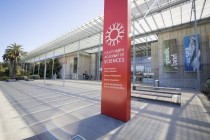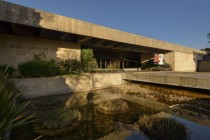The California Academy of Sciences traces its history from 1853.
The museum is accompanied by a planetarium, rainforest and aquarium - coral reef, tides and marsh habitats. The museum holds 46 million specimens. The exhibitions show, among others, the skeleton of Tyrannosaurus Rex, the albino American alligator, the albino reticulated python, and the Foucault pendulum.
The main building covers an area of 37,000 square meters.
© California Academy of Sciences
| Museum | Rank | Voting | Country | Location | Website | Type | More | |
|---|---|---|---|---|---|---|---|---|
| California Academy of Sciences | 235. | 181 | USA | San Francisco | Natural history,... research institution | More | ||
| California Science Center | 52. | 351 | USA | Los Angeles | Science and technology,... air and space | More | ||
|
California Science Center founded in 1951 as the California Museum of Science and Industry. Current permanent exhibitions: Ecosystems, Creative World, World of Life, Space exhibits, Aircraft, Robotic spacecraft.
|
||||||||
| Calouste Gulbenkian Museum | 197. | 231 | Portugal | Lisbon | Art | More | ||
|
Calouste Gulbenkian Museum opened in 1969. The founder of the museum, as well as the Centro de Arte Moderna (CAM) and the Gulbenkian Art Library, is the Calouste Gulbenkian Foundation.
The collection includes works of art from ancient Egypt, Mesopotamia, Greece and Rome, Islamic art, Chinese art, Japanese art, Armenian art as well as 18th-century French decorative art, René Lalique jewelry and works by European masters such as Rembrandt, Hals, Ruisdael, Rubens, Fragonard, Boucher, Rodin, Monet, Renoir, Manet, Degas, Gainsborough, Turner. The collection includes 6,000 works of art, of which over one thousand are on permanent exhibitions. Calouste Gulbenkian Foundation, Lisbon. Photo: © Ricardo Oliveira Alves |
||||||||
| Canadian Museum of History | 95. | 627 | Canada | Gatineau | History, archaeology,... ethnography | More | ||
|
The Canadian Museum of History welcomes over 1.2 million visitors each year to its celebrated complex in the heart of the National Capital Region, making it one of the country's most-visited museum. With roots stretching back to 1856, it is one of Canada's oldest public institutions and a respected centre of museological excellence, sharing its expertise in history, archaeology, ethnology and cultural studies both within Canada and abroad. The National Collection consists of more than four million artifacts, specimens, works of art, written documents, and sound and visual recordings.
In addition to its ongoing exhibitions, including the spectacular Grand Hall, the First Peoples Hall, and the Canadian History Hall that provides a stunning showcase for more than 1,500 artifacts, including many of Canada's important historical treasures, each year the Museum presents a number of outstanding exhibitions focusing on Canadian and world history and civilizations. The Museum is also home to the Canadian Children's Museum. |
||||||||
| Canadian War Museum | 279. | 168 | Canada | Ottawa | National - military,... history, memorial, art | More | ||
|
The origins of the Canadian War Museum date back to 1880, but was formally established in 1942.
It functions as both a museum of Canadian military history and a memorial site. It is designed to emphasize the human experience of war. For the public it offers: Canadian Experience galleries, LeBreton Gallery, Memorial Hall, Regeneration Hall, Royal Canadian Legion Hall of Honor. Its collections include, among others: weapons, rare vehicles, uniforms, medals, art, documents, maps, sound and visual recordings, e.g. Mercedes-Benz car that belonged to Adolf Hitler, Chieftain and Mk III Valentine tanks, CF-101 Voodoo fighter. The entire collection includes over 3 million artifacts. The museum building covers an area of 440,000 square meters. |
||||||||
| Canterbury Museum | 358. | 239 | New Zealand | Christchurch | Natural history,... history, cultural history | More | ||
|
Canterbury Museum was established in 1867. It officially opened to the public on 3 December 1870.
Some key collections include: 1. Māori and Pacific Collections - Taonga (treasures) from Ngāi Tahu and other iwi (tribes) - Waka (canoes), korowai (cloaks), and whakairo (carvings) - Artifacts from various Pacific cultures 2. Antarctic Exploration - Items from the expeditions of Robert Falcon Scott and Ernest Shackleton - Equipment, clothing, and documents from early Antarctic explorers 3. Natural History - New Zealand’s unique flora and fauna, including moa skeletons - Geological specimens, fossils, and minerals 4. Early Canterbury and Colonial History - Artifacts from European settlers, including furniture, clothing, and tools - Early photography collections and paintings 5. Asian and Egyptian Collections - Chinese and Japanese artifacts, including ceramics and textiles - A small but significant Egyptian collection, including a mummy 6. Costume and Textile Collection - Historic clothing, including 19th and 20th-century fashion - Wedding dresses, military uniforms, and accessories 7. Decorative Arts and Social History - Ceramics, glassware, and furniture from different time periods - Items reflecting daily life in New Zealand’s history 8. Military History - New Zealand’s involvement in World War I and II - Medals, weapons, and personal belongings of soldiers 9. Transport and Technology - Vintage bicycles, cars, and other forms of transport - Scientific instruments and early communication devices 10. Archive and Manuscript Collections - Maps, letters, and documents related to Canterbury’s history - Photographs and oral histories As of 2020, museum housed over 2 million objects in its collection. The museum encompassed approximately 6,500 square meters of floor space. The museum is currently undergoing a significant redevelopment, which includes plans for 6,500 square meters of new exhibition and display space, increasing the total exhibition area by 50%. Upon completion, the museum will feature a total of approximately 9,750 square meters dedicated to exhibitions. |
||||||||
| Centre Pompidou | 17. | 1273 | France | Paris | Art | More | ||
|
Center Pompidou opened in 1977.
The Center Pompidou houses one of the world's most important collections of modern and contemporary art. There are also large temporary exhibition galleries and a library. |
||||||||
| Centro Cultural Banco do Brasil | 157. | 201 | Brazil | São Paulo | Art | More | ||
|
Centro Cultural Banco do Brasil, São Paulo opened in 2001. It covers an area of 4 183 square meters.
Centro Cultural Banco do Brasil, São Paulo does not have its own collection. The CCBB program, São Paulo is prepared annually and begins with the process of registering projects via the Internet. Anyone can submit their project, Project registration is done by filling out a comprehensive electronic form. The registration period is usually from April to May. After the registration phase, the projects are examined by CCBB analysts who receive guidance from management on the marketing strategies for the current year. |
||||||||
| Centro Cultural Banco do Brasil | 61. | 440 | Brazil | Rio de Janeiro | Art | More | ||
|
Centro Cultural Banco do Brasil, Rio de Janeiro opened in 1989. It covers an area of 15 046 square meters.
Museu Banco do Brasil, created in 1955, has a historical collection, which includes, among others, numismatic items and documents. In the museum you can see original interiors with period furniture, for example, the presidential room. An interesting feature of the museum is the pneumatic installation, which, using compressed air, uses a system of underground pipes to quickly transport documents inserted into small metal containers. |
||||||||
| Centro Cultural Banco do Brasil | 135. | 327 | Brazil | Brasília | Art | More | ||
|
Centro Cultural Banco do Brasil, Brasília opened in 2000. It covers an area of 7,000 square meters.
Museu Banco do Brasil has in its collection works of artists from the first half of the 20th century, such as Bruno Giorgi, Candido Portinari, Emiliano Di Cavalcanti. |
||||||||
| Centro Cultural Banco do Brasil | 238. | 191 | Brazil | Belo Horizonte | Art | More | ||
|
Centro Cultural Banco do Brasil Belo Horizonte (CCBB BH) was opened in 2013.
It has, among others, 6 exhibition rooms, an educational program room, a multimedia room, and a cultural goods warehouse. It has an area of 12,000 square meters. Foto Vagner Costa |
||||||||
| Changdeokgung Palace | 141. | 420 | South Korea | Seoul | Historic house | More | ||
|
Changdeokgung Palace was built between 1405 and 1412 during the reign of King Taejong, the third king of the Joseon dynasty, as the second royal palace after Gyeongbokgung (the main palace of the dynasty), currently the National Palace Museum of Korea. In 1592, during the Japanese invasion of Korea (Imjin War), it was burned down. The reconstruction of the palace began only in 1609 during the reign of King Seonjo, and was completed during the reign of his successor, King Gwanghaegun. Later, Changdeokgung was destroyed and rebuilt several times, especially in the 18th century. In 1910, after the annexation of Korea by Japan, the palace was taken over by the Japanese authorities and part of it was destroyed. During the Japanese occupation (1910–1945), many palace buildings were demolished or transformed. After Korea regained independence, Changdeokgung underwent numerous restoration works.
Changdeokgung Palace was built in the traditional Korean architectural style that is characteristic of the Joseon Dynasty period (1392–1897). This style of architecture emphasizes harmony with the surrounding nature and introduces elements of Confucianism, which played a key role in Korean society and culture during this period. These are the main features of the style in which Changdeokgung was built: 1. Harmony with the surroundings - Changdeokgung was built in a way that aimed to integrate the building with the natural landscape, in accordance with the principles of geomancy (feng shui). The palace did not disturb the natural terrain, which is visible in its asymmetric layout. The palace area was incorporated into hills and valleys, preserving the natural shape of the land. 2. Asymmetrical layout - unlike the symmetrical palaces in China or Japan, Changdeokgung has a more organic, asymmetrical layout due to its harmony with the surrounding nature. The buildings are arranged in accordance with the natural terrain, which gives a sense of spaciousness and naturalness. 3. Simple yet elegant architecture - Changdeokgung's architecture is characterized by simplicity and minimalism, which is in line with Confucian values. Wooden structures, tiled roofs and decorative details are carefully designed to be aesthetically pleasing but not overdone. The roofs of the buildings have characteristic, slightly bent ends, which is typical of traditional buildings in Korea. 4. The beauty of details - the palace is richly decorated with details, such as painted wooden beams (so-called dancheong), which are covered with colorful geometric and floral patterns. Dancheong has both a decorative and protective function, protecting the wood from harmful weather conditions. 5. Huwon Garden (Secret Garden) - also known as the Complex Garden, is an integral part of the palace complex and a perfect example of striving for harmony with nature. The garden includes picturesque ponds, pavilions, pagodas and bridges that have been designed to be fully integrated with the natural landscape. 6. Building material - the primary material used for construction is wood, and the buildings have traditional roofs covered with clay tiles. Many of the palace's buildings, including the most important halls, are built of wooden frames and have open spaces, which allows for natural ventilation of the rooms. Changdeokgung Palace consists of many buildings with different functions that played key roles in the life of the royal court of the Joseon Dynasty. These are the main buildings of Changdeokgung Palace: 1. Injeongjeon (Throne Room) 2. Seonjeongjeon (Board Hall) 3. Huijeongdang (King's Personal Hall) 4. Daejojeon (Queen's Chamber) 5. Nakseonjae (King Heonjong's private residence built in the 19th century) 7. Donhwamun (Main Gate) 8. Juhamnu (Royal Library Pavilion) Changdeokgung Palace does not have a permanent museum collection, it is mainly a royal residence and a historical monument. Nevertheless, there are valuable monuments, artifacts and collections related to Korean history and the Joseon dynasty, which can be seen as part of temporary exhibitions or special events. Here are some of the resources and collections related to Changdeokgung: 1. Architectural monuments and decorations - Dancheong: The colorful paintings on the wooden palace structures are some of the most beautiful examples of traditional decoration in Korean architecture. These decorations, which are an important element of cultural heritage, decorate the beams, ceilings and roofs of the palace buildings. - Pavilions and Bridges: Located in the palace gardens (Huwon), pavilions such as Buyongjeong, Juhamnu, and stone bridges are valuable examples of Korean architecture and are considered national heritage. 2. Collections related to the Joseon dynasty - Royal clothing (hanbok): Traditional royal clothing, including the ceremonial robes of the king, queen and members of the royal family. - Royal furniture: Original wooden furniture used by rulers, such as desks, chairs, beds and other elements of palace interior design. - Musical Instruments: Traditional instruments that were used in court ceremonies and celebrations, such as drums, gongs, and other stringed and percussion instruments. 3. Manuscripts and historical documents - Administrative books: Documents describing the daily functioning of the royal court, as well as important political decisions. - Royal Letters and Records: Documents containing correspondence between members of the royal family or records of kings. 4. Royal arts and crafts - Ceramics and Porcelain: Ceramics that were used at court, including Korean celadon and white porcelain. - Painting and calligraphy: Traditional court paintings, often depicting landscapes, plants and scenes from court life, are presented in temporary exhibitions. Changdeokgung Palace covers an area of approximately 58 hectares, of which Huwon Garden covers approximately 32 hectares. |
||||||||
| Château de Chambord | 184. | 180 | France | Chambord | Historic house | More | ||
|
Château de Chambord built between 1519 and 1547 in the style of the French Renaissance for the French King Francis I.
The largest of the castles in the Loire Valley. It is built on a rectangular plan, in the corners of which there are towers, each 20 meters in diameter, and it is surrounded by a moat. The facade is 156 meters long. Height 56 meters. The castle has 440 rooms, 84 staircases (14 main and 70 smaller ones) and 282 fireplaces. Several rooms in the castle are used as the Musée du comte de Chambord (Henri d'Artois 1820-1883). |
||||||||
| Château de Fontainebleau | 244. | 208 | France | Fontainebleau | Historic house | More | ||
|
The Palace of Fontainebleau is one of the largest French royal castles. The beginnings of the castle date back to the 12th century, rebuilt many times since the 16th century. The dominant styles are the late French Renaissance and the French version of Northern Mannerism.
The School of Fontainebleau (École de Fontainebleau) was active in the arrangement and furnishing of the palace in the years ca. 1530 - ca. 1610. Total area of 45,000 square meters spread over 11 levels. Total rooms 1500. Main interiors: - Gallery of Francis I - Ballroom - Chapel of the Trinity - Stairway of the King - Queen's bedroom - Boudoir of Marie-Antoinette - Throne Room of Napoleon - Gallery of Diana - Apartments of Napoleon - Theatre - Chinese Museum Main courtyards (all courtyards cover 28,000 square meters): - Court of the White Horse - Oval Court - Court of the Fountain The parks and gardens of Fontainebleau include: - Garden of Diana - English garden - Pine Garden Cave - Fountain de Bliaud - Parterre and canal - Carp pond The entire park complex covers 130 hectares. The palace became a national museum in 1927. More than 300,000 works in collections. The Museum of Napoleon I was established in the palace in 1986. |
||||||||
| Château de Montsoreau - Museum of contemporary art | 406. | 228 | France | Montsoreau | Contemporary art | More | ||
|
Created in April 2016 on the initiative of the French contemporary art collector Philippe Méaille, the Château de Montsoreau - Museum of contemporary art is a radical, committed, living place.
Its permanent collection is the world's largest collection of works from the Art & Language movement. It is located two hours from Paris, in the Loire Valley World Heritage of Unesco. Innovative, experimental and unexpected, the cultural program of the Château de Montsoreau - Museum of contemporary art is organized around temporary exhibitions, events, meetings, concerts and performances. |
||||||||
| Château de Versailles | 63. | 422 | France | Versailles | Historic house | More | ||
|
In 1682, the palace of Versailles became the official residence of the King of France. Inside the palace are the Mirror Hall and the Royal Opera. The palace covers an area of 67,000 square meters. Around the palace is a park covering an area of 815 hectares. Grand Trianon and Petit Trianon are located in the park.
|
||||||||
| Chengdu Museum | 36. | 600 | China | Chengdu | History | More | ||
|
Chengdu Museum was founded in 1958.
The total exhibition area covers almost 20,000 square meters. The entire collection includes nearly 200,000 exhibits and are representative of the Chengdu region from the Neolithic period to the Republic of China. Museum collections include bronze from the pre-Qin period, gold and silver; porcelain and silk of the Tang, Song, Yuan and Ming dynasties; graves and treasures of the Ming and Qing dynasties; Dojo paintings, shadows, dolls. |
||||||||
| Chhatrapati Shivaji Maharaj Vastu Sangrahalaya | 326. | 238 | India | Mumbai | History, art, archeology,... natural history | More | ||
|
Chhatrapati Shivaji Maharaj Vastu Sangrahalaya (CSMVS) opened to the public in 1922.
The museum houses over 50,000 artifacts from India, China, Japan and Europe. The museum documents the history of India from prehistoric times to the present day. The museum houses artifacts of the Indus Valley civilization and other relics from ancient India from the times of the Gupta, Maury, Chalukyas and Rashtrakuta; paintings of the major Indian schools of Mughal, Rajasthani, Pahari and Deccani; manuscripts from all over the last millennium; arts and crafts of ivory, jade, silver and gold. |
||||||||
| Chichen Itza | 124. | 244 | Mexico | Pisté | Archaeological park | More | ||
|
Chichen Itza is an ancient Maya and Toltec Mesoamerican city. The main monuments are: Temple of Kukulcan, Temple of the Warriors, Great Ball Court, Sacred Cenote. Managed by the Instituto Nacional de Antropología e Historia (INAH) - National Institute of Anthropology and History.
|
||||||||
| Children's Museum of Indianapolis | 163. | 331 | USA | Indianapolis | Children's | More | ||
|
The Children's Museum of Indianapolis, founded in 1925, is the world's largest children's museum.
The museum's collections are divided into: - Natural Science Collection - fossils, bones of Ice Age animals and animals living today - World Cultures Collection - items from all continents, many eras and a great variety of cultures - Arts and Humanities Collections - American culture from the 18th century to the present day - National Art Museum of Sport - famous athletes and moments in the history of sport presented in the works of artists More than 130,000 number of artifacts and specimens. The museum covers an area of 43,934 square meters. Photo: The Children's Museum of Indianapolis |
||||||||
| China Art Museum | 38. | 387 | China | Shanghai | Art | More | ||
|
China Art Museum was founded in 1956 as the Shanghai Art Museum.
The museum mainly collects Chinese contemporary art. It has around 14,000 works of art in its collections. |
||||||||
| China Aviation Museum | 363. | 293 | China | Beijing | Aviation | More | ||
|
The China Aviation Museum was established in 1989.
The China Aviation Museum in Beijing hosts one of the world’s most extensive aviation collections, curated across three major exhibition areas: the Cavern Exhibition Hall, the Integrated (Masterpiece) Hall, and the Open‑Air Exhibition Area. The museum boasts over 200–300 aircraft, plus a vast array of missiles, radars, engines, artifacts, and archival items. 1. Cavern Exhibition Hall - Set in a former underground bunker carved into Datangshan Mountain (~586 m long). - Features a historical display of aviation development from early flight to modern jets. - Highlights include early Chinese prototypes like the Feng Ru II, Beijing‑1, and Soviet-era types (e.g. La‑9, La‑11, Tu‑2, Yak‑17) alongside models from global aviation. 2. Integrated Hall - A two-floor building showcasing aviation milestones and key figures from the PLA Air Force. - Displays include historic fighter planes and tribute installations to military aviation heroes. 3. Open‑Air Exhibition Area - Outdoor display spanning around 40,000 m², showcasing civilian and military aircraft, air defense systems, and radar installations. - Noteworthy exhibits: • Mao Zedong’s personal Ilyushin Il‑14 VIP transport—visible both inside and out. • Historic aircraft: C‑46, Li‑2, Trident, Y‑7, Airbus A310‑200, and more. • Weaponry exhibits: surface‑to‑air missiles (e.g., Chinese HQ‑2), anti‑aircraft guns, bombs, parachutes, cameras. Additional Highlights - Global selection of over 200 military aircraft from countries like the U.S., Soviet Union, Japan, and the Czech Republic. - Unique machines: early models like the Mosquito bomber, P‑51 Mustang, P‑61 Black Widow, MiG‑15/17/23, Shenyang J series, and rare drones like the Lockheed D‑21. - Also houses aircraft engines (both piston and jet), avionics equipment, flight gear, engine cut‑aways, and scientific exhibits including wind tunnels and educational materials. - Over 2,468 missiles/radars, 10,000 aviation relics, 20,000+ technical documents, and over 1,000 international gifts. |
||||||||
| China Science and Technology Museum | 12. | 563 | China | Beijing | Science and technology | More | ||
|
China Science and Technology Museum founded in 1988. Area: 48,000 square meters.
It presents popular science exhibitions, Astro-vision film screenings, training-based educational programs and experimental-based exhibition programs. Topics: Glories of China and Science Paradise, Exploration and Discovery, Sci-tech and Life and The Challenges and the Future. |
||||||||
| Chongqing Museum of Natural History | 33. | 533 | China | Chongqing | Natural history | More | ||
|
Chongqing Museum of Natural History founded in 1944, initially under the name Western Museum of China.
Currently it covers an area of 30 842 square meters, of which the exhibition occupies 16 252 square meters. It has a collection of approximately 70,000 specimens including minerals, paleontology, plants, animals, and Stone Age exhibits. Among the most valuable exhibits are the skeletons of the dinosaur Omeisaurus Zigongensis and the stegosaurus Tuojiang. Permanent exhibitions: Animal Planet, Dinosaur World, Landscape Metropolis, Earth Mystery, Life Stream, Ecological Homeland. |
||||||||
| Cité des Sciences et de l'Industrie | 46. | 537 | France | Paris | Science and technology | More | ||
|
Cité des Sciences et de l'Industrie was officially opened in 1986.
It covers an area of 150,000 square meters. Specializes in the dissemination of scientific and technological knowledge. It consists of, among others, Explora, planetarium, and IMAX cinema. The museum also has an Argonaute submarine from 1958. Cité des Sciences et de l'Industrie combined with Palais de la Découverte (2010) in the Universcience (EPIC status). |
||||||||
| City of Prague Museum | 356. | 279 | Czech | Prague | Urban - history,... art | More | ||
|
The City of Prague Museum officially opened to the public in 1883.
The collection is dedicated to the history of the city of Prague. The museum has 14 branches located throughout the city. |
||||||||
| Cleveland Museum of Art | 319. | 294 | USA | Cleveland | Art | More | ||
|
The Cleveland Museum of Art (CMA) opened to the public in 1916.
The CMA collections include art collections from all eras and from all parts of the world. The collections of Asian and Ancient Egyptian art stand out. In its collection, CMA has works by, among others, Sandro Botticelli, Caravaggio, El Greco, Peter Paul Rubens, Francisco de Goya, William Turner, Arnold Böcklin, Claude Monet, Pierre-Auguste Renoir, Vincent van Gogh, Paul Gauguin, Auguste Rodin, Pablo Picasso, Amedeo Modigliani, Salvador Dalí, George Bellows, Andy Warhol, Jackson Pollock, CMA's collection includes over 61,000 works of art. |
||||||||
| Cologne Cathedral | 175. | 187 | Germany | Cologne | Temple | More | ||
|
Cologne Cathedral Roman Catholic erected in the Gothic style. Built in 1248-1473 and 1842-1880. Length 144.58 meters, width 86.25 meters, height 157.38 meters. It holds, among others, the Shrine of the Three Kings from around 1180-1225 and the Crucifix of Bishop Gero from around 970.
|
||||||||
| Copán | 400. | 229 | Honduras | Copán | Archaeological site | More | ||
|
Copán was founded as a Maya settlement around the 9th century BC, but it rose to prominence as a major city during the Classic Period of Maya civilization.
The dynastic history of Copán officially begins in AD 426, when K’inich Yax K’uk’ Mo’ established the ruling dynasty, likely with influence from the more powerful Maya city of Tikal. This marked the start of Copán's most significant political and cultural era, lasting until the early 9th century AD, when the city began to decline. Below are the main monuments and features of the site: 1. Acropolis - A massive complex of temples, plazas, tombs, and altars. - Divided into two main areas: • West Court: Associated with ancestor worship and rituals. • East Court: Likely used for royal residences and political functions. - Includes several pyramidal temples, many of which served as burial sites for rulers. 2. Temple 26 ("Hieroglyphic Stairway Temple") - Most famous monument at Copán. - Features the longest known Maya hieroglyphic inscription (63 steps, 2,000+ glyphs). - Commemorates the history of Copán’s dynasty, especially K’inich Yax K’uk’ Mo’ and his successors. - Commissioned and expanded by Uaxaclajuun Ub'aah K'awiil (18 Rabbit). 3. Ball Court - One of the largest and best-preserved Maya ball courts. - Flanked by large macaw-shaped markers (macaws were sacred to the Copán dynasty). - The ballgame was both sport and ritual, often connected to cosmology and elite politics. 4. Great Plaza - An open ceremonial space showcasing stelae and altars. - Many of these stelae depict Copán’s rulers, especially Stela A, B, C, D, F, H, and J. - These monuments show intricate details of kings' dress, symbols of power, and inscriptions. 5. Stelae and Altars - Copán is famous for its elaborately carved stelae, often paired with round or square altars. - Many stelae date from the reign of 18 Rabbit, who elevated Copán's sculptural art to its peak. - The altars sometimes represent cosmological concepts (e.g. world trees, directional stones). 6. Temple 11 - Believed to be a portal between worlds, connecting the earthly realm to the underworld and heavens. - Associated with the last known ruler, Yax Pasaj Chan Yopaat. 7. Temple 16 ("Temple of the Inscriptions") - Built over the tomb of K’inich Yax K’uk’ Mo’, the dynastic founder. - Known for its layered construction—several temples were built atop one another over time. 8. Sculpture Museum - Located at the site, it houses original sculptures removed from the ruins for preservation. - Includes a full-scale reconstruction of the Rosalila Temple, a brilliantly colored, early temple buried intact under Temple 16. 9. Residential and Administrative Zones - The Las Sepulturas complex, just outside the core, reveals elite residences, craft workshops, and administrative buildings. - Helps archaeologists understand daily life, economics, and urban planning. The Copán archaeological site covered a total area of approximately 24.6 square kilometers at its peak during the Classic Period (ca. 400–800 CE). Several museums in Honduras and internationally preserve and exhibit monuments, artifacts, and sculptures from Copán, offering key insights into Maya civilization. Here are the most important ones: 1. Museums in Honduras - Museo de la Escultura Maya (Museum of Maya Sculpture) - Museo Regional de Arqueología Maya 2. International Museums with Copán Artifacts - Peabody Museum of Archaeology and Ethnology, Harvard University, Cambridge, Massachusetts, USA - National Museum of the American Indian (Smithsonian Institution), Washington, D.C., USA - Metropolitan Museum of Art, New York City, USA - Museo de América, Madrid, Spain |
||||||||
| Crystal Bridges Museum of American Art | 325. | 323 | USA | Bentonville (Arkansas) | American art | More | ||
|
Crystal Bridges Museum of American Art opened in 2011.
The founding donor of the museum is the Walton Family Foundation. The museum's permanent collection covers American art from the colonial era to the present day. The collection includes paintings by Charles Willson Peale, Asher Durand, Thomas Eakins, Gilbert Stuart, Mary Cassatt, Benjamin West, Norman Rockwell, Agnes Pelton, John Singer Sargent, Jasper Johns, Jackson Pollock, Andy Warhol, Roy Lichtenstein, Mark Rothko, Georgia O'Keeffe, Edward Hopper and sculptures by Vanessa German, Roxy Paine, James Turrell. The museum buildings, covering an area of 20,200 square meters, are located in the almost 50-hectare park of the museum. In 2014, the museum acquired and reconstructed the Bachman–Wilson House by architect Frank Lloyd Wright. In downtown Bentonville, a satellite multidisciplinary contemporary art space dubbed The Momentary opened in 2020. |
||||||||




